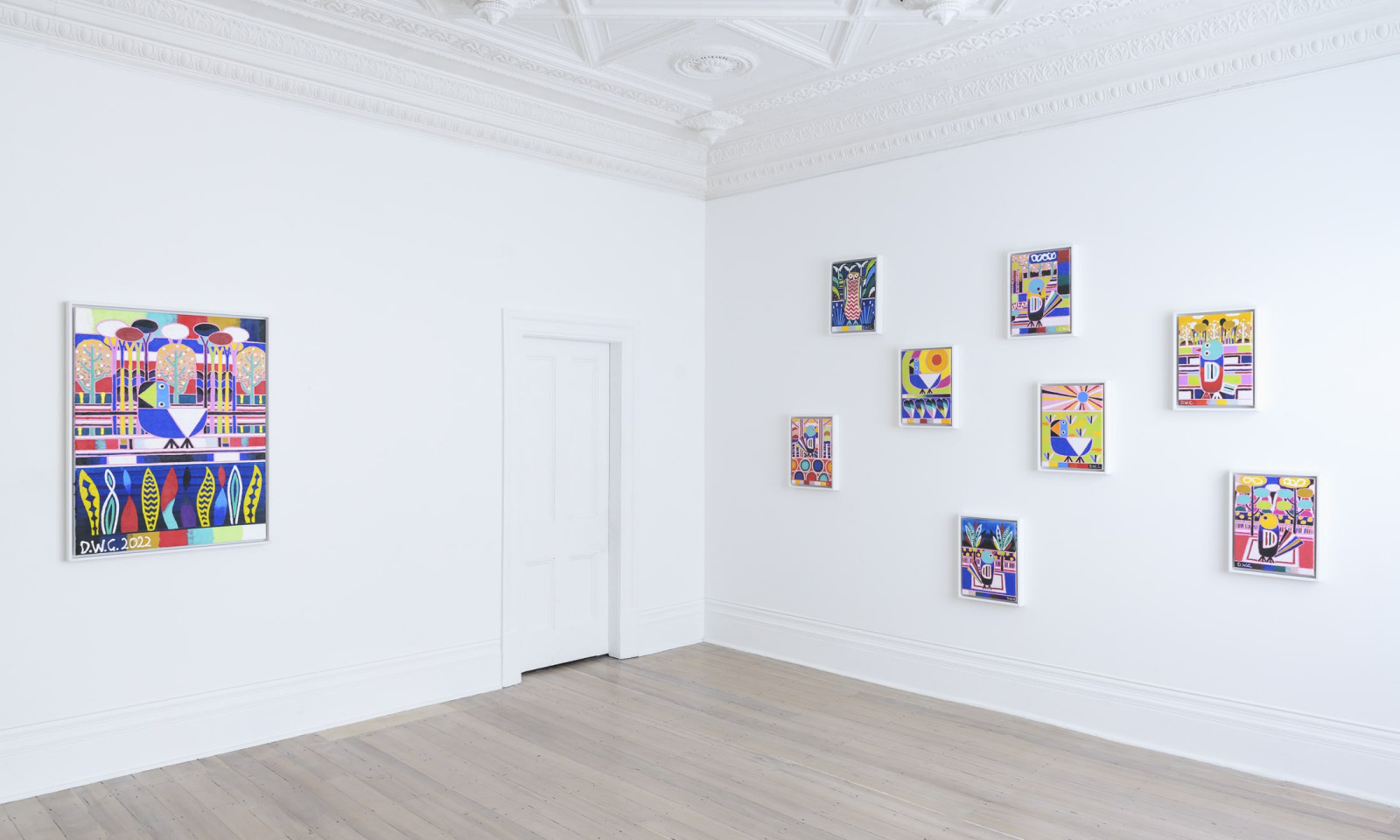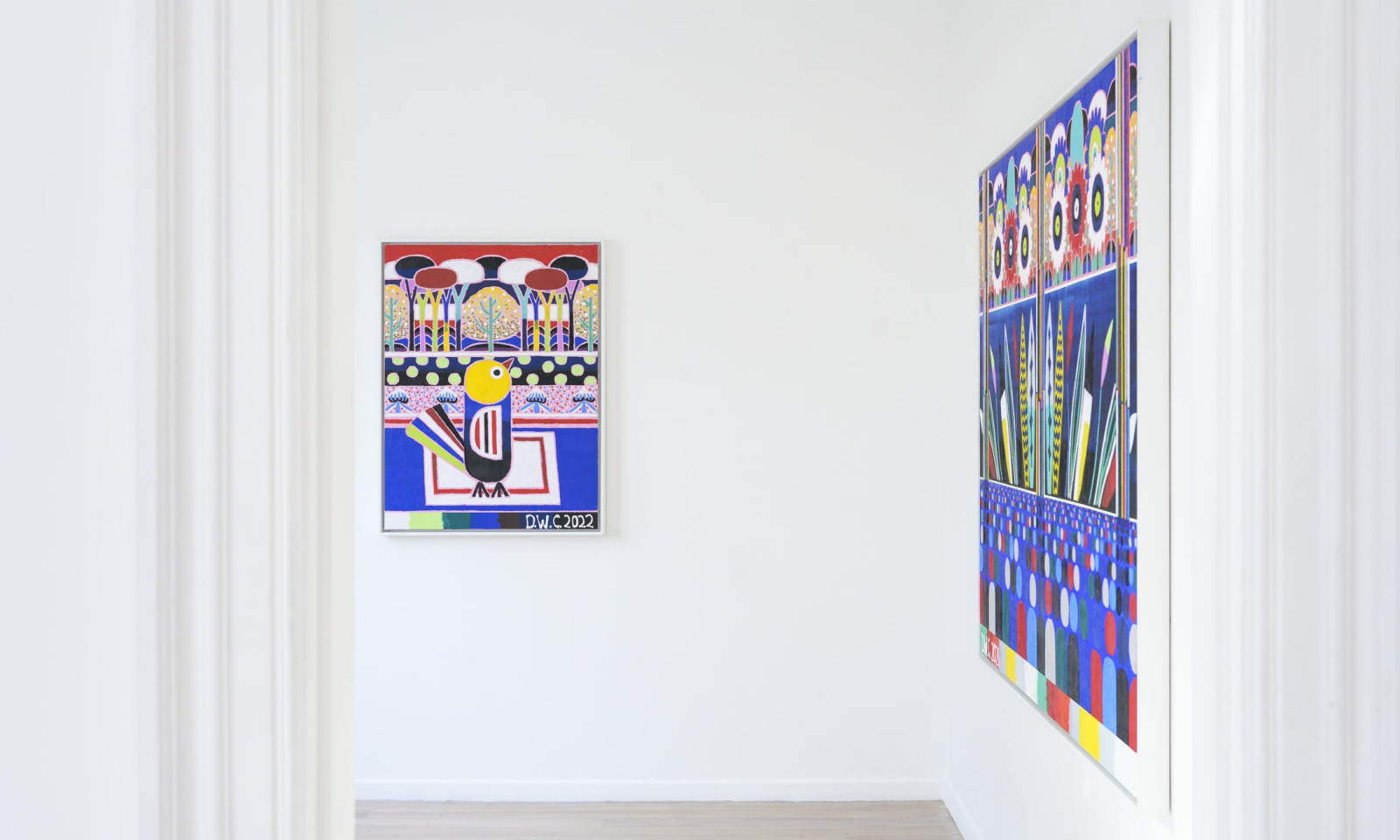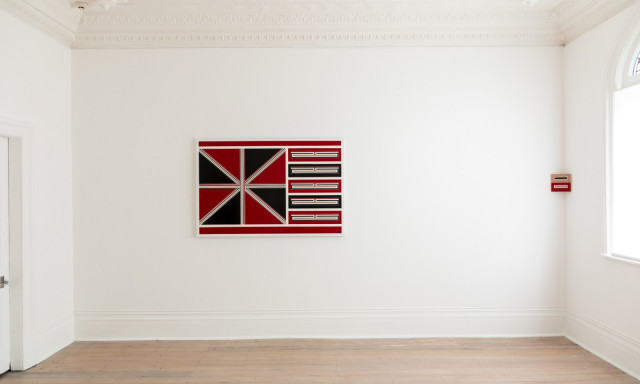About the exhibition
Christchurch-based, Ngāpuhi-descended artist, Darryn George, made a name for himself with large, austere, geometric paintings. Composed on computer before applied in paint, the works combined words with allusions to Gordon Walters and Shane Cotton. They stood out in a restricted kowhaiwhai-inspired palette of red, black and white like a continuation of the painted meeting houses of the late nineteenth century.
In his latest body of work, Ngā Manu, compartmentalised, linear composition and a sense of rhythm is still apparent, but the works are full of figuration, softness and colour.
Christchurch-based, Ngāpuhi-descended artist, Darryn George, made a name for himself with large, austere, geometric paintings. Composed on computer before applied in paint, the works combined words with allusions to Gordon Walters and Shane Cotton. They stood out in a restricted kowhaiwhai-inspired palette of red, black and white like a continuation of the painted meeting houses of the late nineteenth century.
In his latest body of work, Ngā Manu, compartmentalised, linear composition and a sense of rhythm is still apparent, but the works are full of figuration, softness and colour.
The Garden of Eden is George’s theme – a reflection of his faith and a response to Christchurch’s decade of horrors to which Cantabrians responded with piles of flowers and gatherings in the park. The newest innovation in these bright, almost naïf works, are the personable birds. Stylistically there are hints of Kandinsky, Klee, Matisse, and Picasso.
“I’m still interested in working with the Garden of Eden theme,” he says, “but I wanted to introduce birds because of Aotearoa’s special relationship with them – a symbol of our unique ecosystem which has come to represent culture and identity. Also, they are everywhere. They are beautifully ordinary and relatable for all people.”
Birds have long held symbolic roles in art. The goldfinch and peacock represented Christ; the pelican, piety; the dove, peace and the Holy Spirit. But we also tend to project our human virtues and flaws onto birds and see ourselves in them. This is a trait both Māori and Pākehā cultures share through stories and legends.
“There’s a sense of innocence in birds,” George says. “Through a subtle shifting of the head I imbue the birds with personality, or perhaps a sense of curiosity or piety.”
George’s birds tap into a sweeping range of New Zealand art traditions, from Māori rock art and the illustrations of colonial naturalists, through to collectable cards in cereal packets, to artists like Don Binney and Bill Hammond. His process is very much about finding a painterly expression of motu and turangawaewae in place, time and art history.
At the same time, they’re very playful a lot of fun to spend time with.
George graduated with a BFA (painting) from Ilam in 1993, gained a Teaching Diploma from Christchurch College of Education in 1994, and gained his MFA (painting) from RMIT, Melbourne, in 1998. He has exhibited since 1994 and is Head of the Art Department at Christ’s College.
– By Andrew Paul Wood

Darryn George, 2022
Oil pastel and acrylic on canvas, 1060 x 810 mm (framed)

Darryn George, 2022
Oil pastel and acrylic on canvas, 1060 x 810 mm (framed)
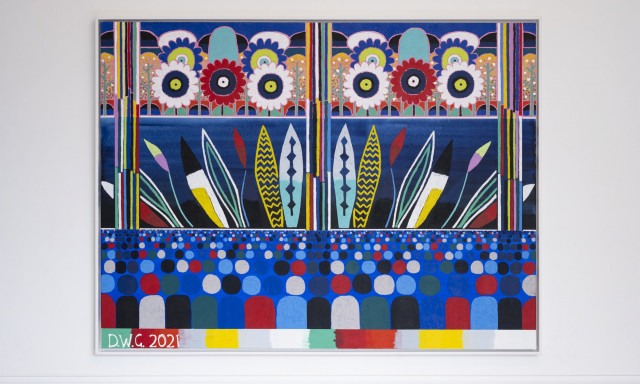
Darryn George, 2021
Oil pastel and acrylic on canvas, 1400 x 1870 mm (framed)

Darryn George, 2022
Oil pastel and acrylic on canvas, 660 x 500 mm (framed)

Darryn George, 2022
Oil pastel and acrylic on canvas, 660 x 500 mm (framed)

Darryn George, 2022
Oil pastel and acrylic on canvas, 450 x 350 mm (framed)

Darryn George, 2022
Oil pastel and acrylic on canvas, 450 x 350 mm (framed)

Darryn George, 2022
Oil pastel and acrylic on canvas, 450 x 350 mm (framed)

Darryn George
Oil pastel and acrylic on canvas, 450 x 350 mm (framed)
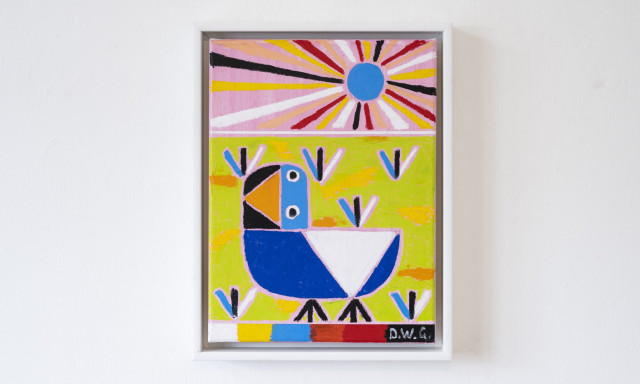
Darryn George
Oil pastel and acrylic on canvas, 450 x 350 mm (framed)

Darryn George, 2022
Oil pastel and acrylic on canvas, 450 x 350 mm (framed)

Darryn George, 2022
Oil pastel and acrylic on canvas, 450 x 350 mm (framed)

Darryn George, 2022
Oil pastel and acrylic on canvas, 450 x 350 mm (framed)

Darryn George, 2022
Oil pastel and acrylic on canvas, 450 x 350 mm (framed)


